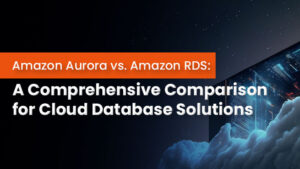
How to Apply Cybersecurity in Fintech for User Protection
Introduction As fintech evolves, it brings innovative financial solutions that enhance user convenience, such as mobile banking, digital lending, and secure payments. However, as financial
Exclusive Discount Offer: Unlock 3-Months of IPSpecialist’s Premium Plan for Just $59.99 $15.99! Save $44 Today! Subscribe Now!

Introduction As fintech evolves, it brings innovative financial solutions that enhance user convenience, such as mobile banking, digital lending, and secure payments. However, as financial

Introduction In the realm of cloud computing, Amazon Web Services (AWS) offers a variety of managed database options that help organizations scale, secure, and optimize

Introduction In the ever-evolving landscape of cybersecurity, zero-day attacks pose a significant threat to businesses and individuals alike. A zero-day attack exploits a software vulnerability
Table of Contents
Ansible is an open-source DevOps tool that can aid in configuration management, deployment, and provisioning, among other things. It is simple to set up and uses SSH to connect between servers. The Playbook is used to describe automation jobs, and the Playbook is written in YAML, a reasonably primary language.
Ansible’s consistency, stability, and scalability will benefit your IT infrastructure, enabling you to automate database, storage, network, and firewall setups. It ensures that the server has all the essential packages and software to run the application. Another benefit of Ansible is that it assists in defining the infrastructure configuration to be implemented.
If you’re interested in learning more about Ansible, our Ansible Specialist in Advanced Automation Study Guide would be the best fit for you!
Consider the following scenario: you have a debug version of a Visual C++ application. If you want to execute the application on a computer, you need some prerequisites, such as the Microsoft Visual C++ library DLLs and Visual C++ installed. So, this is where Ansible ensures that all of these basic packages and software are installed on your PC for your application to function smoothly in any environment, whether test or production.
It also stores your application’s historical data, allowing you to roll back to a prior version or upgrade it.
It can act as a repository for all IT installations and configurations.
Ansible server connects to the host machines and pushes the playbooks using SSH.
It contains an Ansible automation engine that allows users to run a playbook directly on the hosts. The Ansible automation engine is made up of several parts.
Ansible has hundreds of built-in modules, which are the code executed when a playbook is run. A playbook has plays, each of which contains various tasks and each of which includes modules.
The modules get executed on your hosts when you run a playbook, and these modules contain action. As a result, when you run a playbook, all of the action occurs on your host machines.
Playbooks determine your workflow since the tasks you write in a playbook are executed in the sequence you wrote them. Writing YAML code for playbooks is easy.
Plugins are a particular type of module. Before a module is executed on the nodes, these plugins are executed. For logging purposes, plugins are run on the primary control machine. To avoid costly fact-gathering processes, cache plugins are employed to retain a cache of facts. Action plugins are front-end modules in Ansible that can perform tasks on the controller system before calling the modules themselves.
There are connection plugins in the architecture. It is not always necessary to utilize SSH to connect to your host machines; instead, a connection plugin can be used. For example, Ansible includes a Docker container connection plugin, which allows you to quickly connect to all of your Docker containers and begin setting them.

Ansible connects to nodes and distributes tiny programs known as Ansible modules. By default, Ansible executes these modules through SSH and then removes them when finished.
The Ansible management node is the controlling node that oversees the Playbook’s complete execution. It is the node from which the installation is being executed, and the inventory file contains a list of hosts where the modules must be run. The management node establishes an SSH connection, runs the modules and installs the product on the host machines. It uninstalls the modules after they have been installed. That is how Ansible operates.

The agent does not need to be installed on the server to work with Ansible. It establishes connections with the server using SSH and python.
It manages configurations using modules, and there are over 750 built-in modules to choose from, making configuration management simple.
It has a low latency, which improves performance.
There is no need for agents or tools, resulting in significant space savings and cheap deployment overhead.
Ansible is a game-changer in terms of infrastructure management. It not only assists you in managing infrastructure, but it does so in a quick, efficient, and simple manner. It also assures a single source of truth by allowing all configurations to be controlled as text, which can subsequently be audited using a VCS. We may use Ansible to automate server setup and configuration management, orchestration, and much more.
© 2024 All rights reserved | Privacy Policy | Terms and Conditions | Sitemap | Cookie Policy




